Effect of Residual Stresses on the Fatigue Stress Range of a Pre-Deformed Stainless Steel AISI 316L Exposed to Combined Loading
Abstract
1. Introduction
2. Experimental Procedures
2.1. Material AISI 316L and Tensile Test
2.2. Tensile Test
2.3. Bending of the Billet
2.4. Cyclic Loading of the Bent Billet
2.5. Schematic Prediction of the Stress Range
3. Numerical Modelling, Simulation, and Analysis
3.1. Bending of the Billet by Numerical Simulation
3.2. Analysis of Residual Stress and Strain after Bending
3.3. Numerical Simulation of Fatigue Loading
4. Determination of the Range of Stress during Fatigue Loading
5. Experimental Testing of the Bent Billet
6. Conclusions
- The model material was based on the experimentally obtained true tensile stress–strain behaviour of metastable austenitic steel.
- The model was applied on bent pre-deformed billets with residual stresses introduced at the middle inside point of the bent billet.
- On the basis of numerical FEM simulations of the bending deformation process and combined tensile–bending simulation of loading, the calibration curves in terms of force vs. displacement and a true tensile stress–strain plot were established with respect to the residual stress.
- The maximum and minimum force vs. displacement on the calibration curve provided the maximum and minimum opening stresses at the most critical point of the billet.
- Due to residual stress (introduced by bending deformation of the billet) and the fatigue loading in the elasto-plastic range of the material, the opening stress ratio was different from the ratio of applied force or moment (e.g., RF = 0.1).
- At the same time, with respect to the actual fatigue process, the ratio of opening stress was higher (e.g., Rσ = 0.444), which meant that the fatigue threshold of the pre-deformed specimen was lower and, consequently, the fatigue limit [26,27] was lower. It is important to stress that, during combined loading, a linear relationship was obtained between the applied force and the moment. This would make it simpler to determine the range of opening stress and the actual stress ratio Rσ.
- The results show low fatigue behaviour of all the pre-deformed billets, where the lowest number of cycles was achieved at the lowest effective range of stress Rσ = 0.154.
Author Contributions
Funding
Data Availability Statement
Conflicts of Interest
Appendix A. Non-Destructive Measurement of Residual Stresses


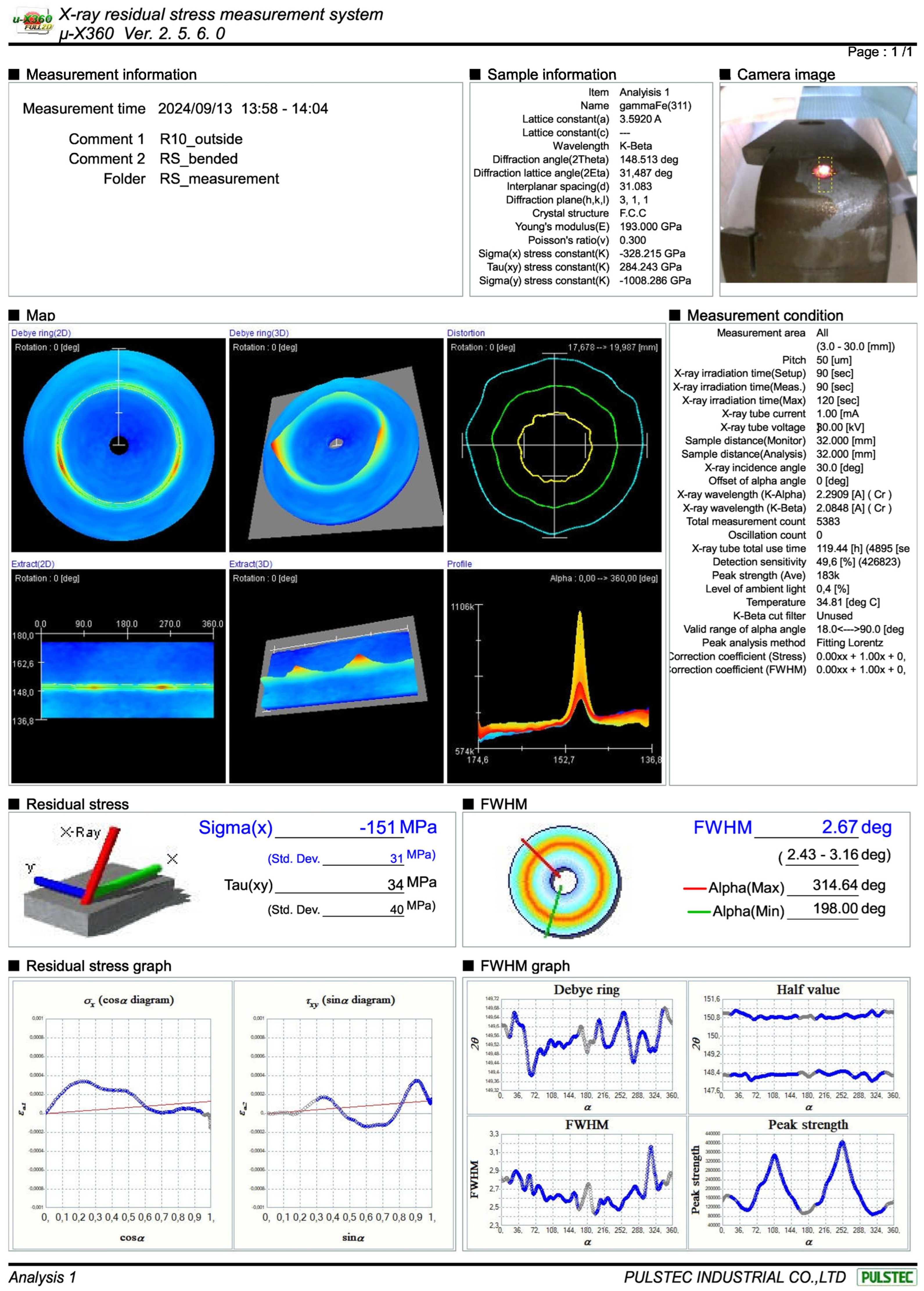
References
- Martelo, D.F.; Mateo, A.M.; Chapetti, M.D. Fatigue Crack Growth of a Metastable Austenitic Stainless Steel. Int. J. Fatigue 2015, 80, 406–416. [Google Scholar] [CrossRef]
- Pineau, A.G.; Pelloux, R.M. Influence of Strain-Induced Martensitic Transformations on Fatigue Crack Growth Rates in Stainless Steels. Metall. Trans. 1974, 5, 1103–1112. [Google Scholar] [CrossRef]
- Mei, Z.; Morris, J.W. Influence of Deformation-Induced Martensite on Fatigue Crack Propagation in 304-Type Steels. Metall. Trans. A 1990, 21, 3137–3152. [Google Scholar] [CrossRef]
- Biswas, S.; Sivaprasad, S.; Narasaiah, N.; Tarafder, S.; Chakraborti, P. Load History Effect on FCGR Behaviour of 304LN Stainless Steel. Int. J. Fatigue 2007, 29, 786–791. [Google Scholar] [CrossRef]
- Chanani, G.R.; Antolovich, S.D.; Gerberich, W.W. Fatigue Crack Propagation in Trip Steels. Metall. Trans. 1972, 3, 2661–2672. [Google Scholar] [CrossRef]
- Jagarinec, D.; Kirbiš, P.; Predan, J.; Vuherer, T.; Gubeljak, N. Analysis of Deformation Induced Martensite in AISI 316L Stainless Steel. Mater. Test. 2016, 58, 547–552. [Google Scholar] [CrossRef]
- Solomon, N.; Solomon, I. Deformation Induced Martensite in AISI 316 Stainless Steel. Rev. Metal. 2010, 46, 121–128. [Google Scholar] [CrossRef]
- de Abreu, H.F.G.; de Carvalho, S.S.; de Lima Neto, P.; dos Santos, R.P.; Freire, V.N.; de Silva, P.M.O.; Tavares, S.S.M. Deformation Induced Martensite in an AISI 301LN Stainless Steel: Characterization and Influence on Pitting Corrosion Resistance. Mater. Res. 2007, 10, 359–366. [Google Scholar] [CrossRef]
- Tourki, Z.; Ktari, Z.; Sidhom, H.; Gahbiche, A. Investigations Expérimentales Autour de la Transformation Martensitique Induite par Déformation Plastique dans les Aciers Inoxydable Austensitiques AISI 304—Archive Ouverte HAL. Available online: https://hal.archives-ouvertes.fr/hal-03362517 (accessed on 5 June 2022).
- Milad, M.; Zreiba, N.; Elhalouani, F.; Baradai, C. The Effect of Cold Work on Structure and Properties of AISI 304 Stainless Steel. J. Mater. Process Technol. 2008, 203, 80–85. [Google Scholar] [CrossRef]
- Huang, J.-Y.; Yeh, J.-J.; Jeng, S.-L.; Chen, C.-Y.; Kuo, R.-C. High-Cycle Fatigue Behavior of Type 316L Stainless Steel. Mater. Trans. 2006, 47, 409–417. [Google Scholar] [CrossRef]
- Shrestha, R.; Simsiriwong, J.; Shamsaei, N. Fatigue Behavior of Additive Manufactured 316L Stainless Steel under Axial versus Rotating-Bending Loading: Synergistic Effects of Stress Gradient, Surface Roughness, and Volumetric Defects. Int. J. Fatigue 2021, 144, 106063. [Google Scholar] [CrossRef]
- Topic, M.; Tait, R.; Allen, C. The Fatigue Behaviour of Metastable (AISI-304) Austenitic Stainless Steel Wires. Int. J. Fatigue 2007, 29, 656–665. [Google Scholar] [CrossRef]
- Pessoa, D.F.; Kirchhoff, G.; Zimmermann, M. Influence of Loading Frequency and Role of Surface Micro-Defects on Fatigue Behavior of Metastable Austenitic Stainless Steel AISI 304. Int. J. Fatigue 2017, 103, 48–59. [Google Scholar] [CrossRef]
- M4P 316L Datasheet, M4P, Krefeld, Germany. Available online: https://www.metals4printing.com/wp-content/uploads/datasheets/de/Fe-Basis/m4p_Datenblatt_316L_DE.pdf (accessed on 12 June 2024).
- ISO 6892-1:2019; Metallic Materials—Tensile Testing—Part 1: Method of Test at Room Temperature. International Organization for Standardization: Geneva, Switzerland, 3 January 2020.
- Van, K.D. Multiaxial Fatigue Criteria Based on a Multiscale Approach. In Handbook of Materials Behavior Models; Elsevier: Amsterdam, The Netherlands, 2001; pp. 457–463. [Google Scholar] [CrossRef][Green Version]
- Abaqus 6.14 Documentation. Available online: http://62.108.178.35:2080/v6.14/index.html (accessed on 9 May 2023).
- Vosniakos, G.-C.; Pipinis, G.; Kostazos, P. Numerical Simulation of Single Point Incremental Forming for Asymmetric Parts. Facta Univ. Ser. Mech. Eng. 2021, 19, 719. [Google Scholar] [CrossRef]
- Lamprecht, M.; Leonhartsberger, M. Tool Stiffness Calculation in Roll Forming. Int. J. Simul. Model. 2021, 20, 40–51. [Google Scholar] [CrossRef]
- Panov, D.; Kudryavtsev, E.; Naumov, S.; Klimenko, D.; Chernichenko, R.; Mirontsov, V.; Stepanov, N.; Zherebtsov, S.; Salishchev, G.; Pertcev, A. Gradient Microstructure and Texture Formation in a Metastable Austenitic Stainless Steel during Cold Rotary Swaging. Materials 2023, 16, 1706. [Google Scholar] [CrossRef]
- Liu, X.; Zhang, S.; Bao, Y.; Zhang, Z.; Yue, Z. Strain-Controlled Fatigue Behavior and Microevolution of 316L Stainless Steel under Cyclic Shear Path. Materials 2022, 15, 5362. [Google Scholar] [CrossRef]
- Deng, B.; Yang, D.; Wang, G.; Hou, Z.; Yi, H. Effects of Austenitizing Temperature on Tensile and Impact Properties of a Martensitic Stainless Steel Containing Metastable Retained Austenite. Materials 2021, 14, 1000. [Google Scholar] [CrossRef]
- Sterpin Valic, G.; Cukor, G.; Jurkovic, Z.; Brezocnik, M. Multi-Criteria Optimization of Turning of Martensitic Stainless Steel for Sustainability. Int. J. Simul. Model. 2019, 18, 632–642. [Google Scholar] [CrossRef]
- Wu, R.; Xu, Y.; Li, K. Role of Metastable Austenite on Crack Resistance of Quenching and Partitioning Sheet Steels. Met. 2023, 13, 762. [Google Scholar] [CrossRef]
- Chapetti, M.D. Fracture Mechanics for Fatigue Design of Metallic Components and Small Defect Assessment. Int. J. Fatigue 2022, 154, 106550. [Google Scholar] [CrossRef]
- Avanzini, A. Fatigue Behavior of Additively Manufactured Stainless Steel 316L. Materials 2022, 16, 65. [Google Scholar] [CrossRef] [PubMed]
- D’Andrea, D. Additive Manufacturing of AISI 316L Stainless Steel: A Review. Metals 2023, 13, 1370. [Google Scholar] [CrossRef]
- Morgan, R.; Sutcliffe, C.J.; O’neill, W. Density analysis of direct metal laser re-melted 316L stainless steel cubic primitives. J. Mater. Sci. 2004, 39, 1195–1205. [Google Scholar] [CrossRef]
- Murakami, Y. Effects of Small Defects and Nonmetallic Inclusions on the Fatigue Strength of Metals. JSME Int. Journal. Ser. 1 Solid Mech. Strength Mater. 1989, 32, 167–180. [Google Scholar] [CrossRef]
- Pelegatti, M.; Benasciutti, D.; De Bona, F.; Lanzutti, A.; Magnan, M.; Novak, J.S.; Salvati, E.; Sordetti, F.; Sortino, M.; Totis, G.; et al. On the factors influencing the elastoplastic cyclic response and low cycle fatigue failure of AISI 316L steel produced by laser-powder bed fusion. Int. J. Fatigue 2022, 165, 107224. [Google Scholar] [CrossRef]
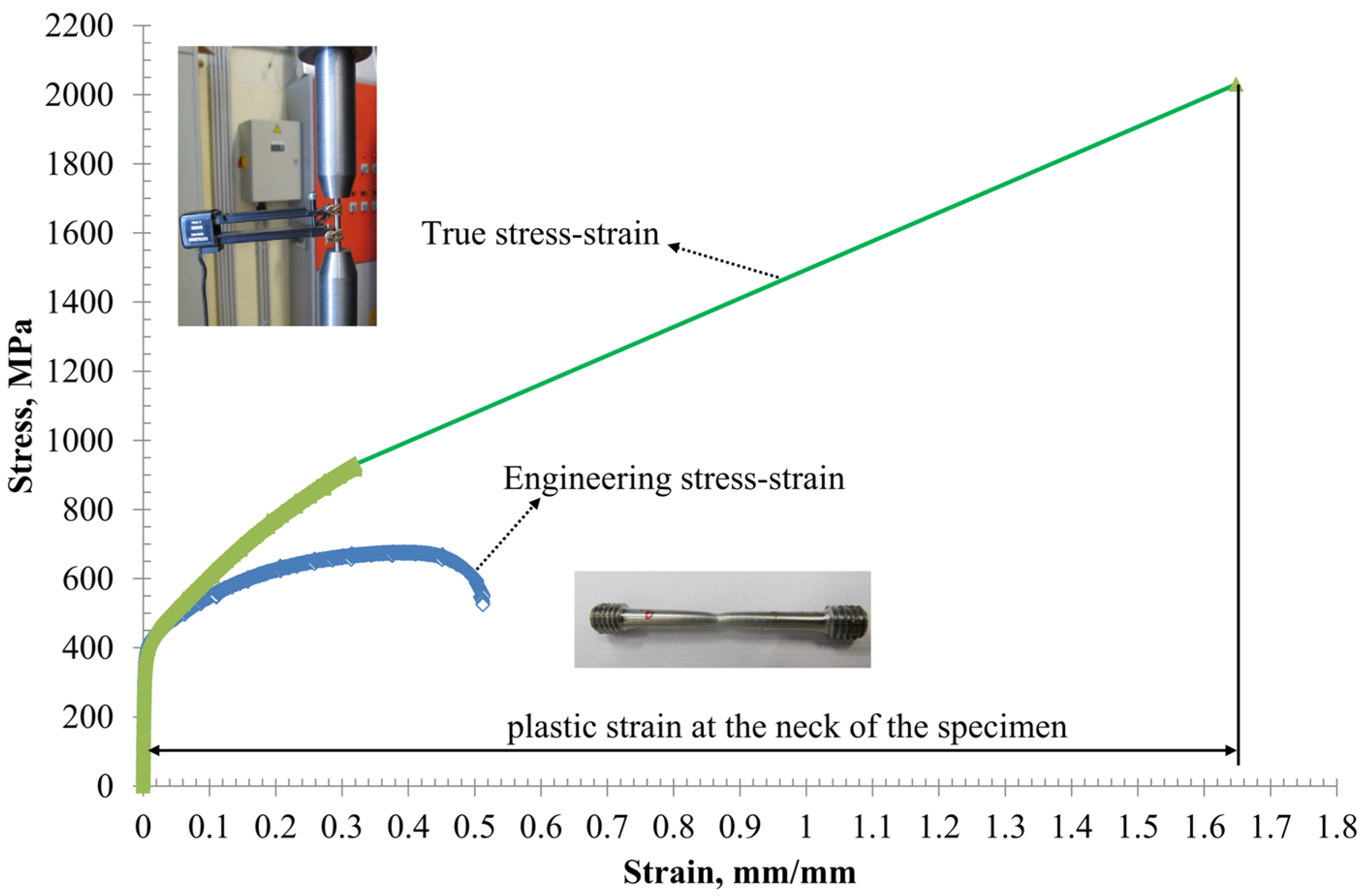

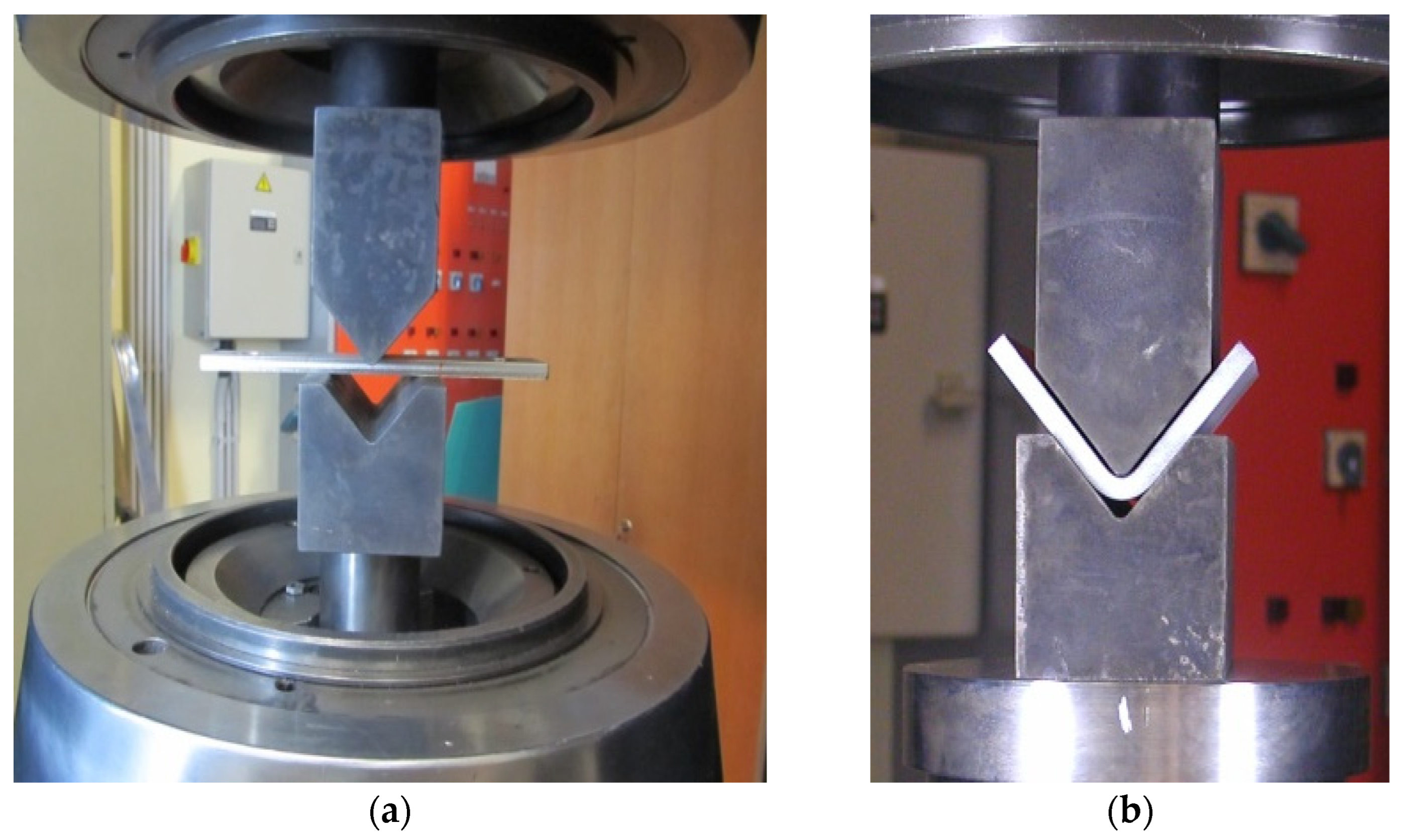
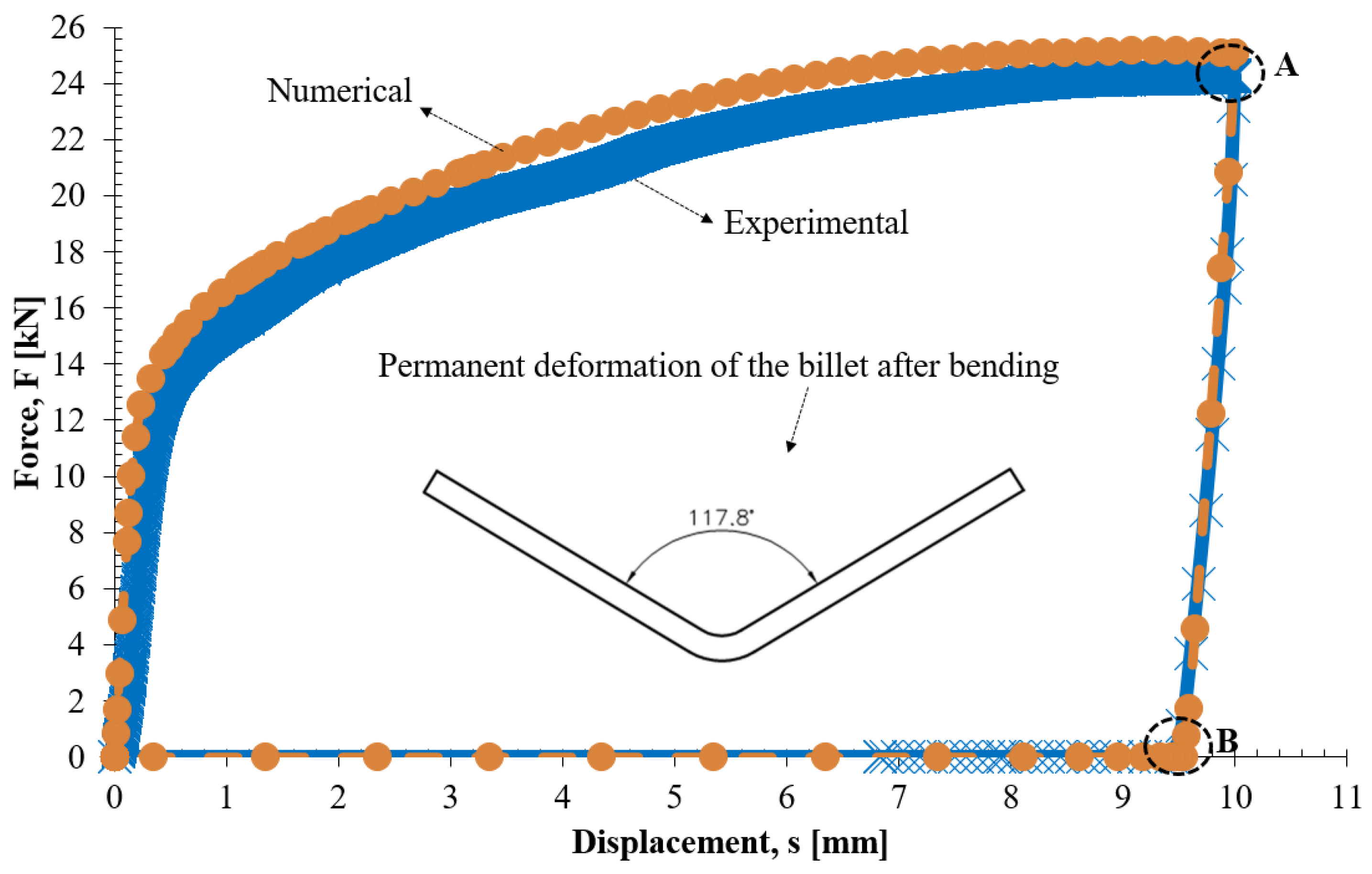
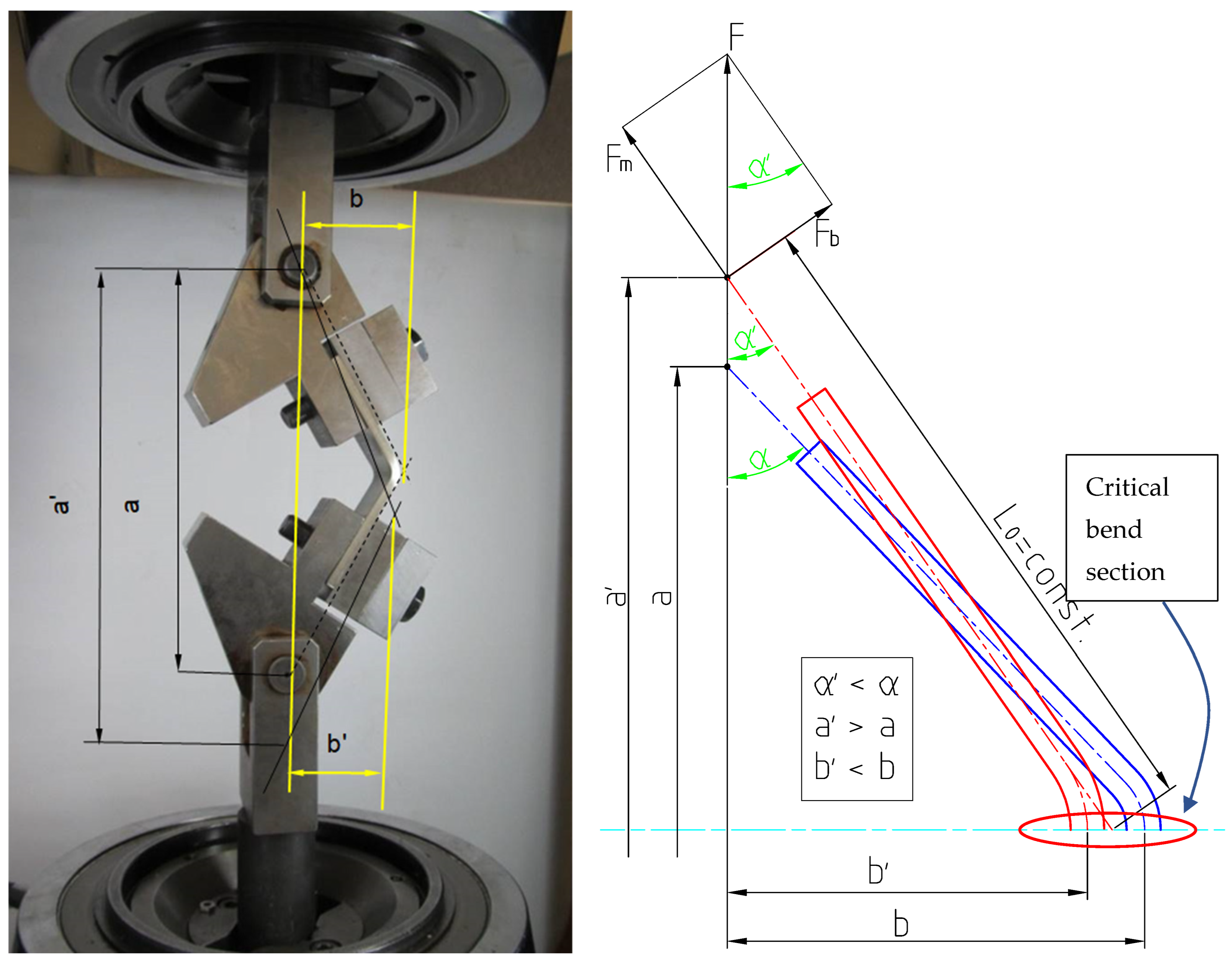


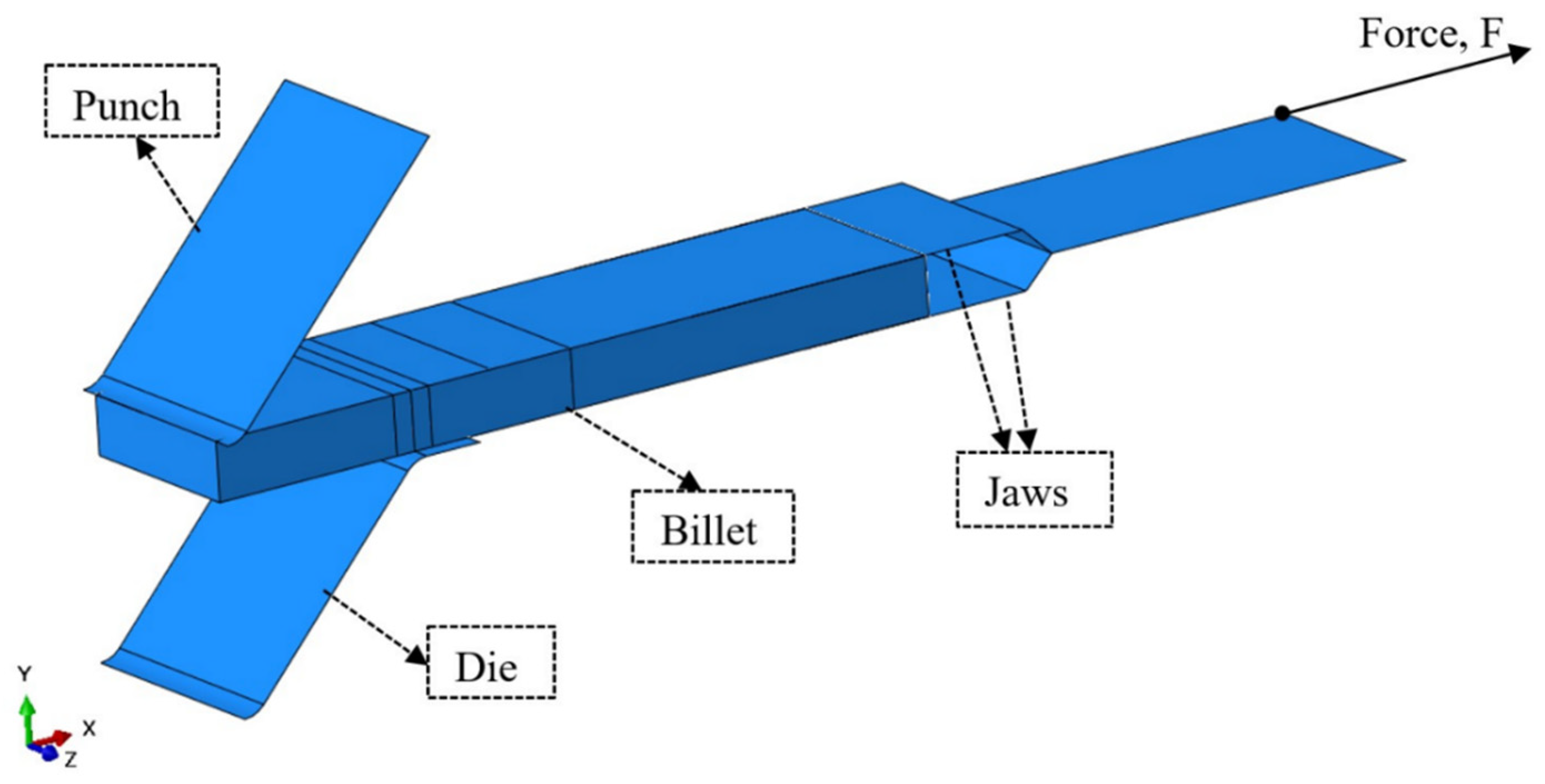
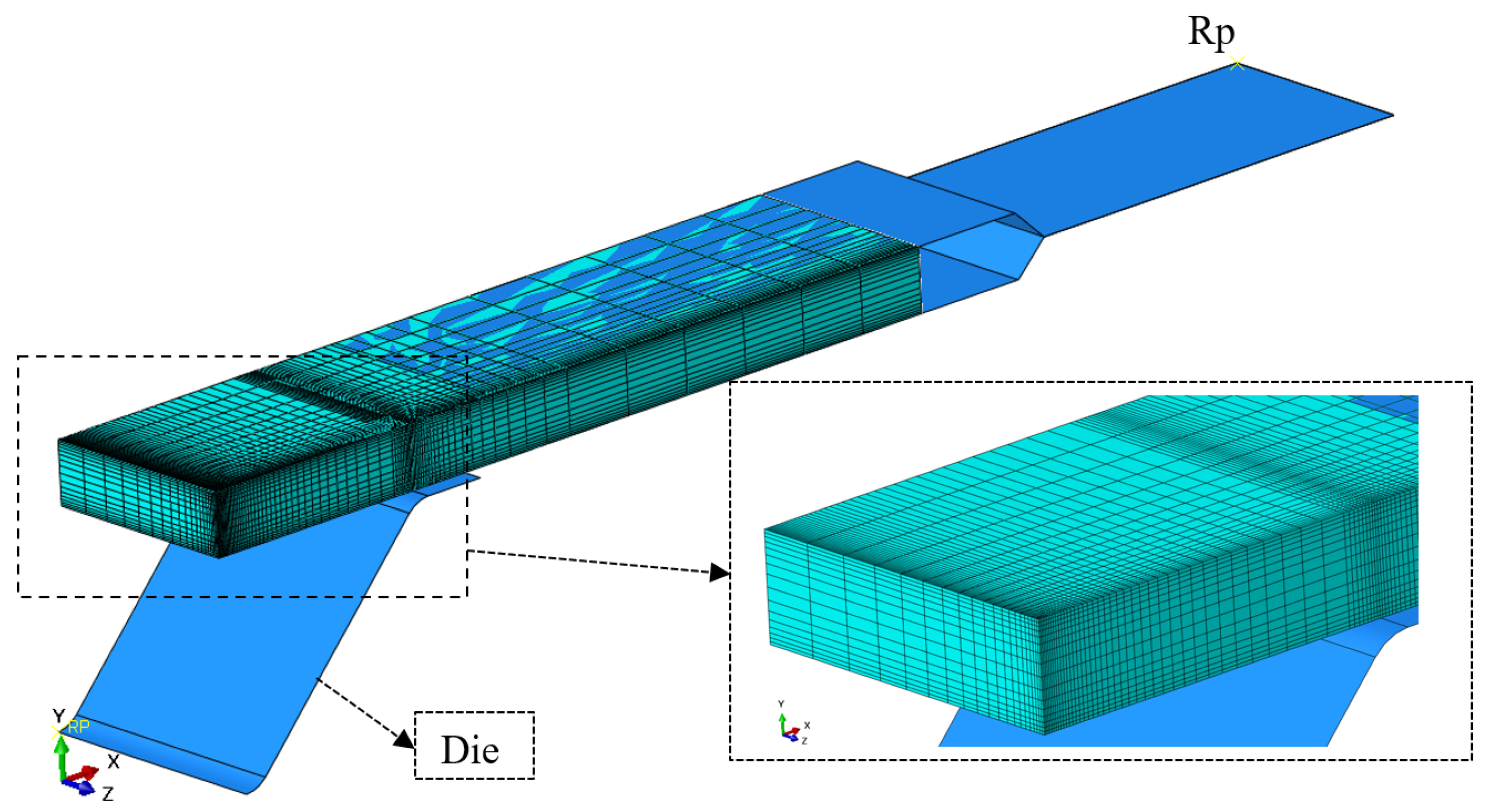

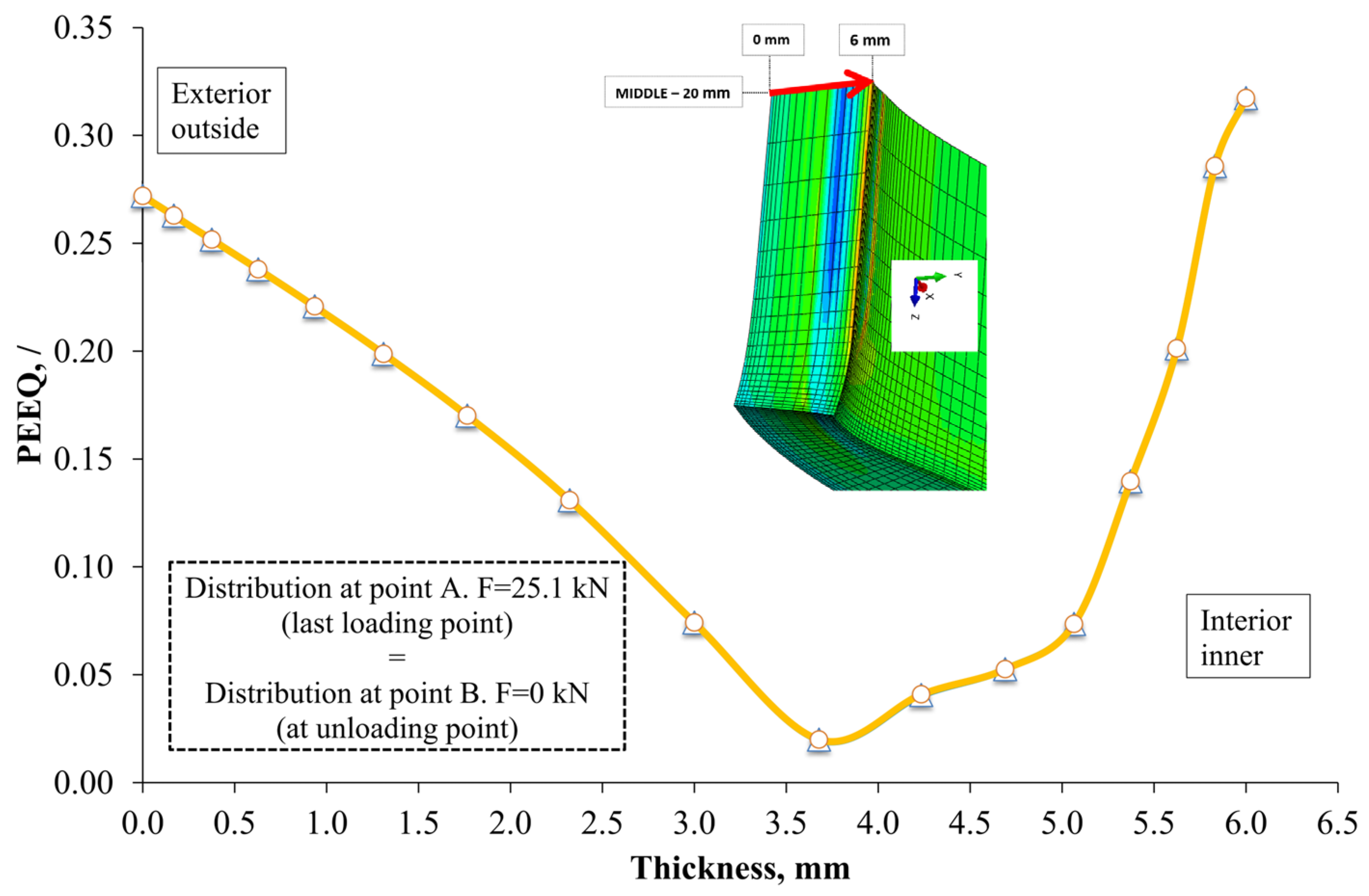


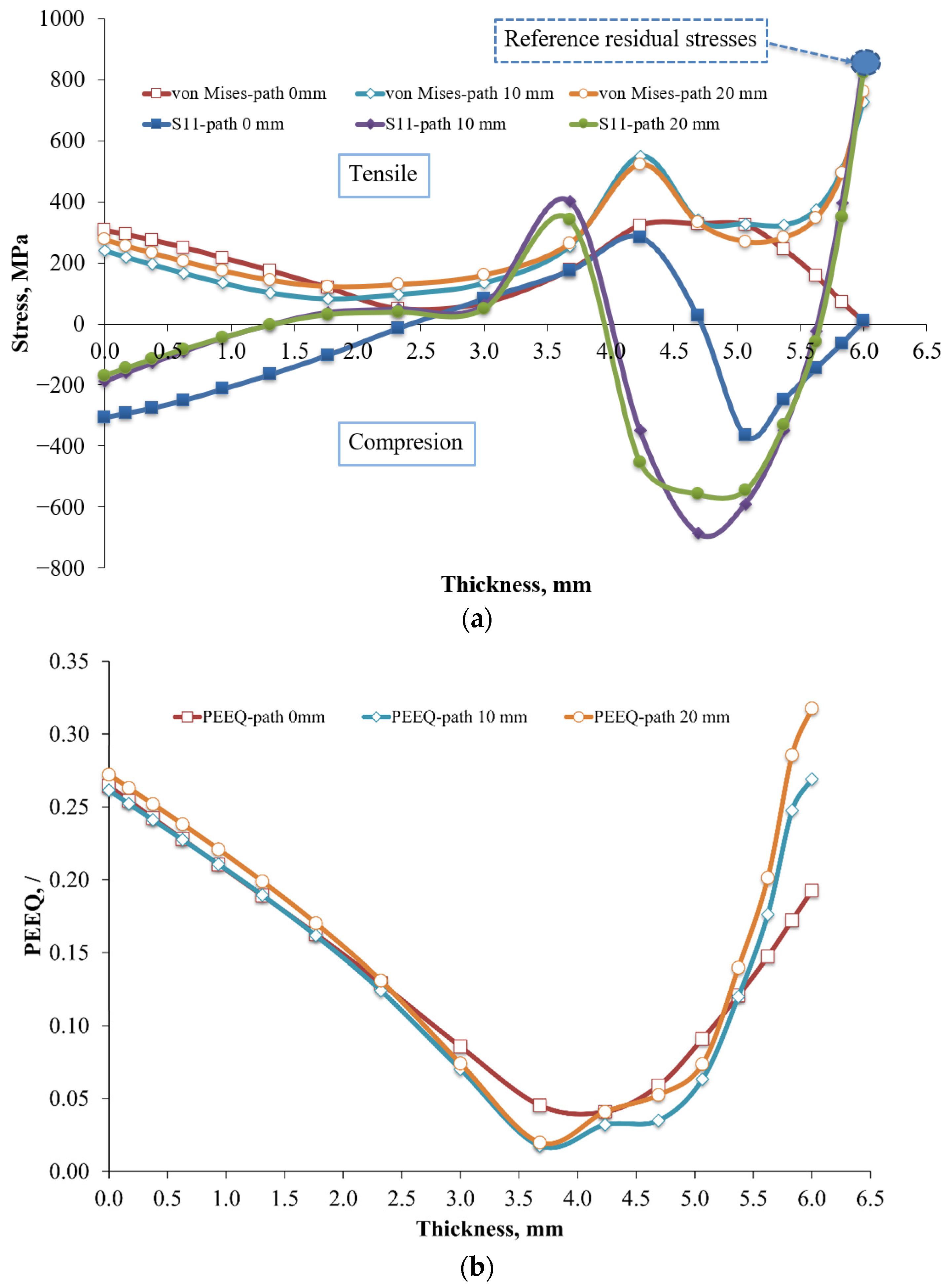
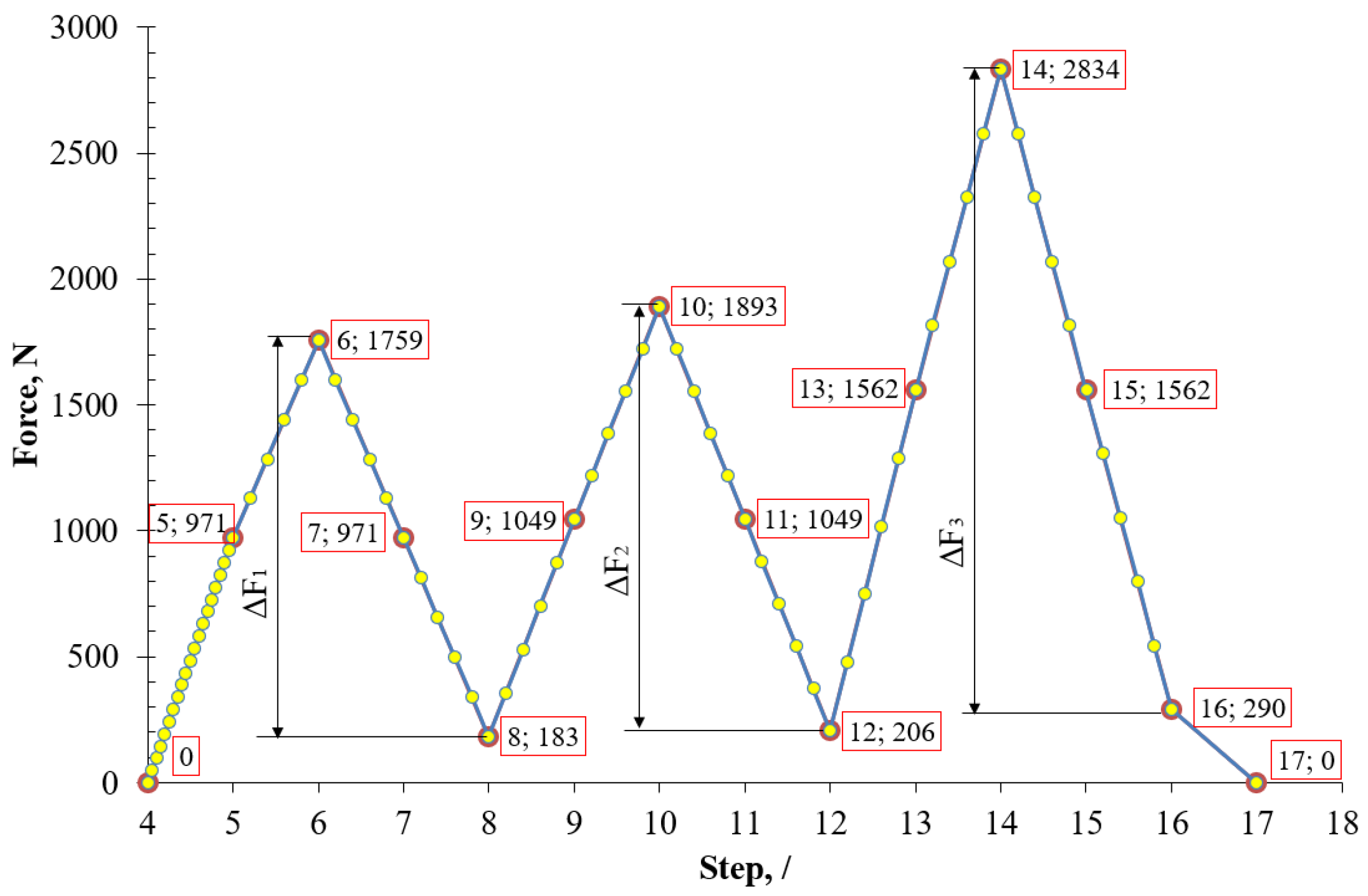

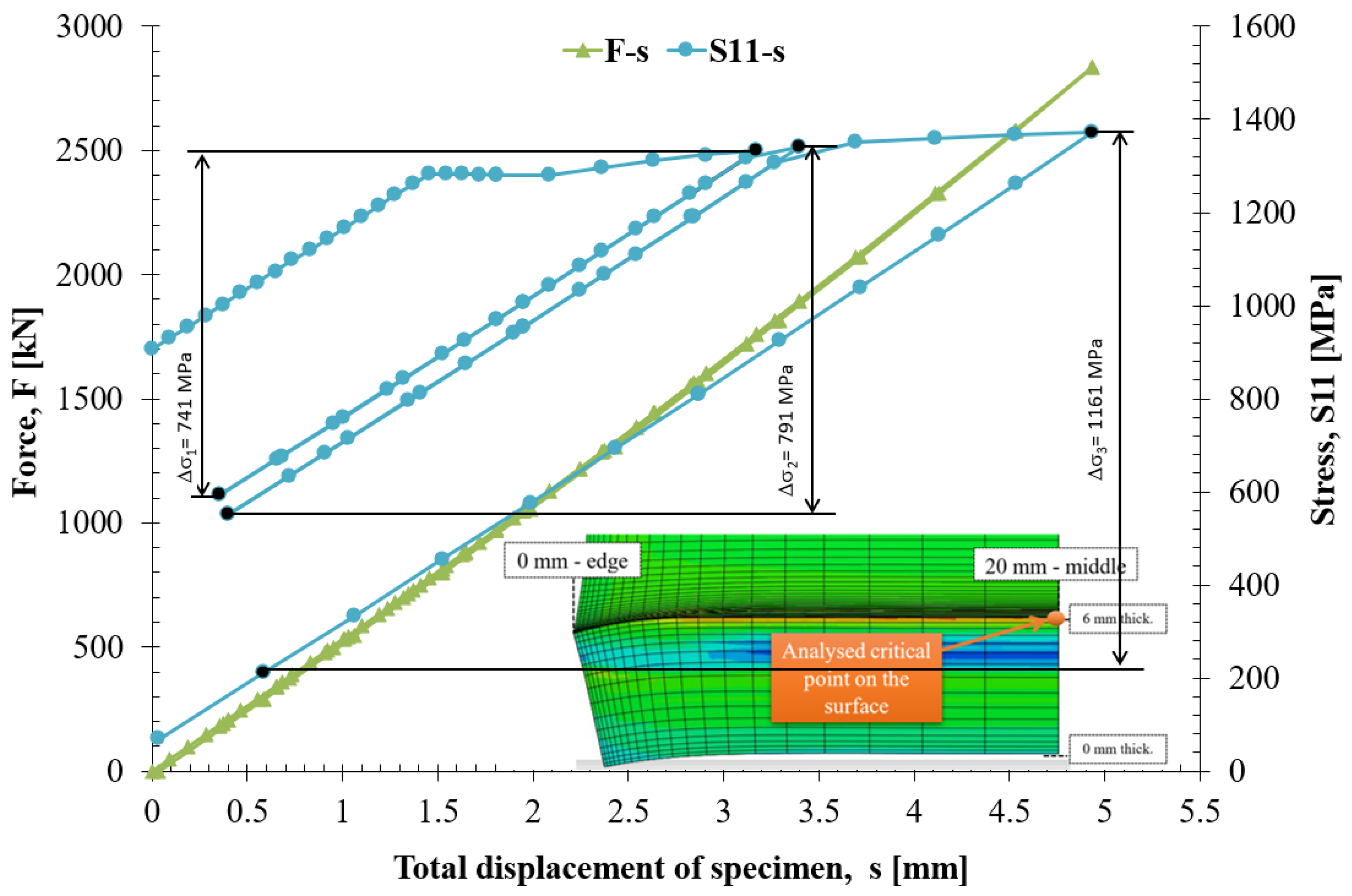
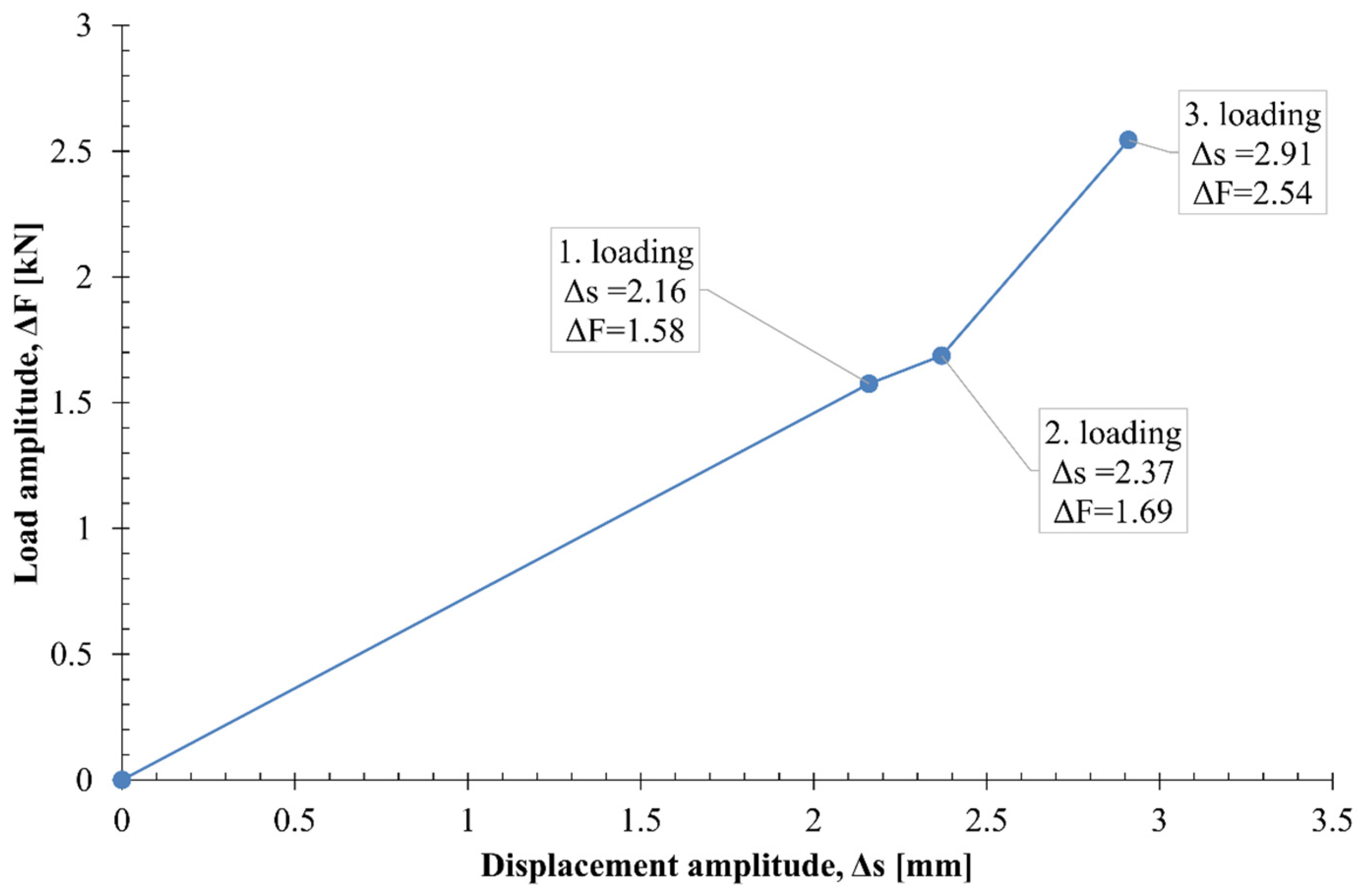



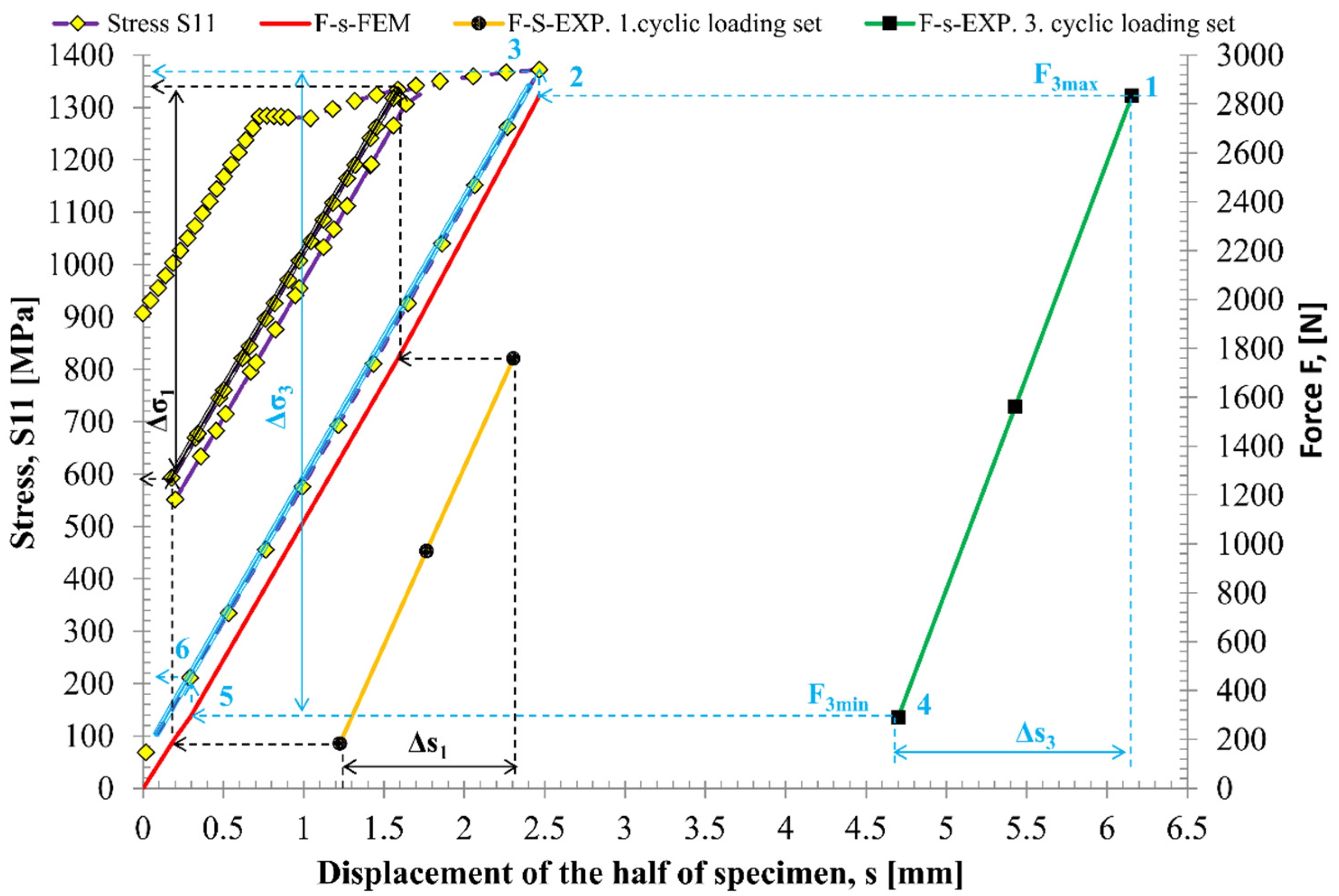

| Fmax (kN) | Fmin (kN) | ΔF (kN) | RF | σmax (MPa) | σmin (MPa) | Δσ (MPa) | Rσ (/) | |
|---|---|---|---|---|---|---|---|---|
| 1. set | 1.759 | 0.183 | 1.58 | 0.10 | 1334 | 593 | 741 | 0.444 |
| 2. set | 1.893 | 0.206 | 1.69 | 0.11 | 1342 | 551 | 791 | 0.411 |
| 3. set | 2.834 | 0.29 | 2.54 | 0.10 | 1372 | 211 | 1161 | 0.154 |
Disclaimer/Publisher’s Note: The statements, opinions and data contained in all publications are solely those of the individual author(s) and contributor(s) and not of MDPI and/or the editor(s). MDPI and/or the editor(s) disclaim responsibility for any injury to people or property resulting from any ideas, methods, instructions or products referred to in the content. |
© 2024 by the authors. Licensee MDPI, Basel, Switzerland. This article is an open access article distributed under the terms and conditions of the Creative Commons Attribution (CC BY) license (https://creativecommons.org/licenses/by/4.0/).
Share and Cite
Jagarinec, D.; Gubeljak, N. Effect of Residual Stresses on the Fatigue Stress Range of a Pre-Deformed Stainless Steel AISI 316L Exposed to Combined Loading. Metals 2024, 14, 1084. https://doi.org/10.3390/met14091084
Jagarinec D, Gubeljak N. Effect of Residual Stresses on the Fatigue Stress Range of a Pre-Deformed Stainless Steel AISI 316L Exposed to Combined Loading. Metals. 2024; 14(9):1084. https://doi.org/10.3390/met14091084
Chicago/Turabian StyleJagarinec, Darko, and Nenad Gubeljak. 2024. "Effect of Residual Stresses on the Fatigue Stress Range of a Pre-Deformed Stainless Steel AISI 316L Exposed to Combined Loading" Metals 14, no. 9: 1084. https://doi.org/10.3390/met14091084
APA StyleJagarinec, D., & Gubeljak, N. (2024). Effect of Residual Stresses on the Fatigue Stress Range of a Pre-Deformed Stainless Steel AISI 316L Exposed to Combined Loading. Metals, 14(9), 1084. https://doi.org/10.3390/met14091084







